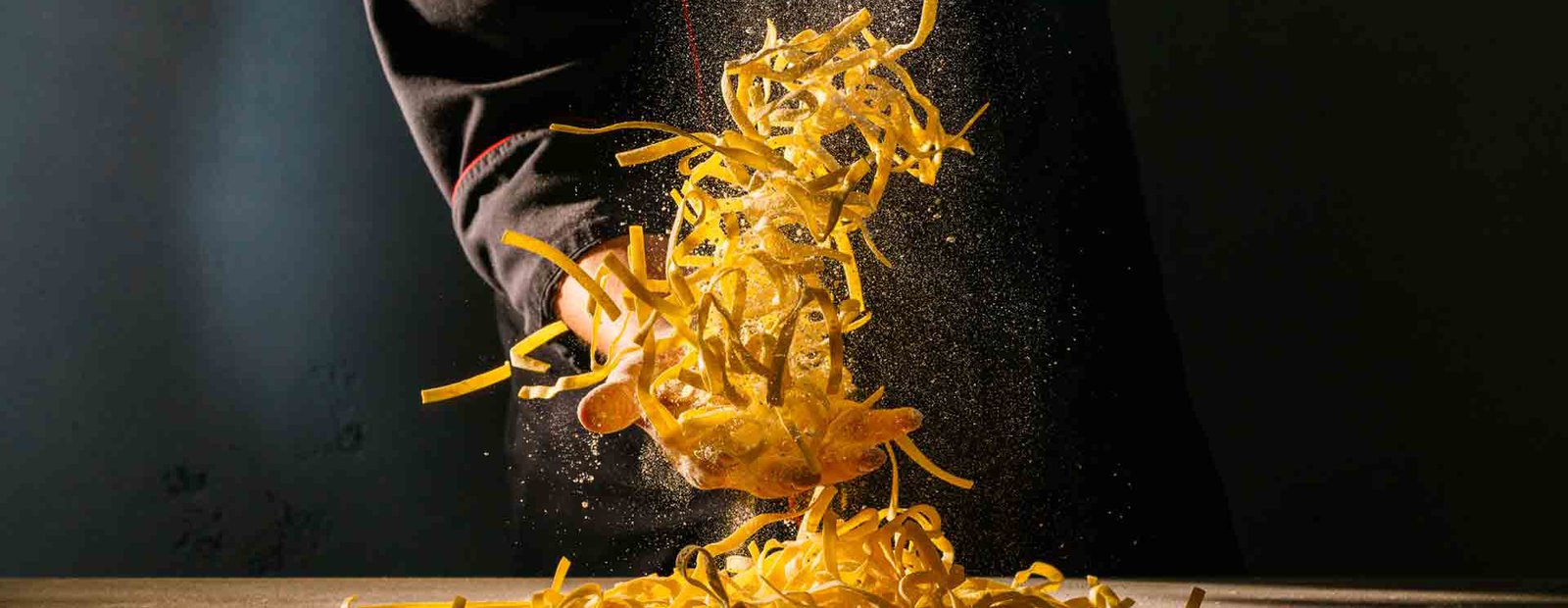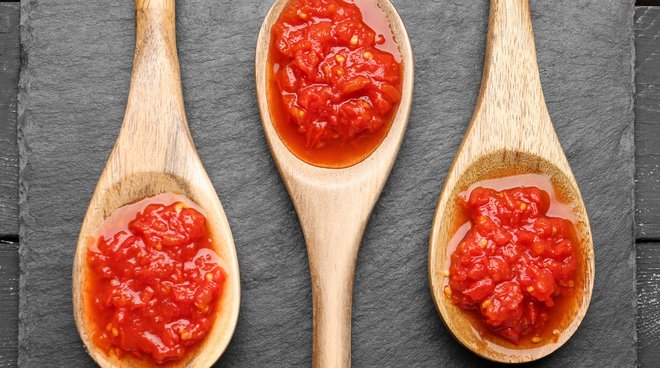Pulp, Passata and Related Products
A THOUSAND YEARS OF PASTA
A micro-history of the pasta most loved by Italians (and not only).

At the beginning it was “lagana”, thin pasta dough that we could compare to today's fresh pasta, tagliatelle or lasagna.
The Greeks called it lánganon, the Romans laganum but it was always the same thing: dough made with water and flour, lying flat, cut in strips, stuffed and cooked in the oven, also common among the Etruscans.
According to some historians, the birth of pasta dates back to 1000 BC, others believe it was born with the early settlements when men began to work the land and cultivate wheat. It is not possible to venture into this story without encountering legends and ignoring disputes, accredited and discredited theories that spaghetti were imported from China by Marco Polo in the 13th century.
So, are they Italian, Chinese or Arabian?
As Beniamino Natale, italian correspondent from China, would say, "The topic has always been present at dinner discussions between Italians and Chinese. If they have always claimed they invented them, we Italians have responded that we have always cooked them better."
What we know for certain is that pasta has a thousand-year history that does not know the confines of geography or time.
Pasta is a universal food that, in different times and ways, has become a staple food in many countries.
Archeopasta
At the archaeological site of Cerveteri - UNESCO World Heritage Site - some findings are kitchen utensils that have all the appearance of the equipment needed to prepare pasta: a bag for the flour, the work surface, the rolling pin and the wheel to cut it. In 300 BC pasta was already part of the eating habits of our ancestors.
On the other side of the world, in the archaeological site of Lajia - "the Pompeii of China" because it was submerged by the mud of the Yellow River - some bowls dating back to 4000 BC have been found with spaghetti, perhaps the oldest in history.
Unfortunately they disintegrated immediately after excavation once in contact with air. There is only a photograph taken in 2005.
Only in the 5th century BC does pasta become as it is seen today, or nearly.
Fresh or dry pasta of different sizes, long or short and cooked in water (no longer in the oven). The turning point was in the sixteenth century with the first companies of pasta masters in Milan, Rome, Naples and Palermo, and especially with the arrival of tomatoes from Peru.
The meeting of pasta with tomato and cheese took place in the year 1600 ... since then they have never left each other!
If all this talk about pasta made you hungry, try a delicious Bucatini recipe with pink sauce and curried brown shrimps!
NEWS
ALSO IN FOOD TRENDS
Pulp, Passata and Related Products
The history of tomato sauce: Arab and Italian traditions
Tomato sauce is undoubtedly one of the most emblematic ingredients of Italian cuisine, but its history actually has its roots in much older cultures and traditions. This condiment, which today represents the essence of Mediterranean cuisine, has a past linked to both Arab and Italian traditions.
Pulp, Passata and Related Products
Spicy tomato sauce: how to make it at home with Pomì
Spicy tomato sauce is loved all over the world, as it is capable of giving life and character to any type of dish: from simple starters to meat dishes and, of course, Italian pasta recipes.
Pulp, Passata and Related Products
Tomato soup: a journey of taste through Italy
Tomato soup is more than just a dish: it is a real symbol of Italian cuisine.


